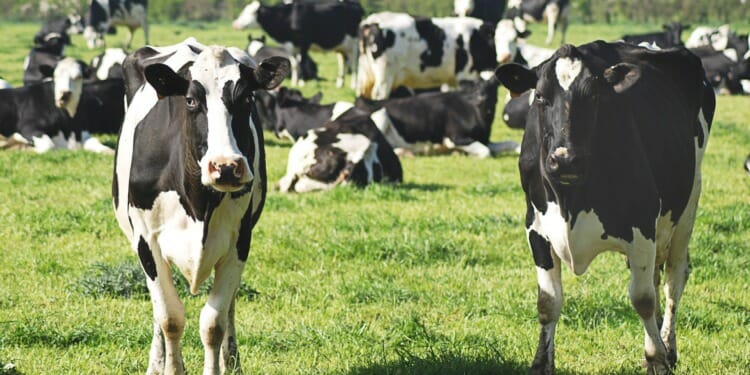Taking place in Germany, the study published in the Current Biology Journal found that 11 out of the 16 cows that were involved were able to be toilet trained, using a facility called the “MooLoo.”
According to Donald Broom, professor of animal welfare at the University of Cambridge, waste management can be improved and greenhouse gas emissions can be decreased if animals are potty trained. Thus, these findings may be the groundbreaking discovery that is necessary to accelerate the reduction of emissions.
The practical aspect of the study involved researchers giving sweets (a kind of molasses) to the cows to wheedle the animals into urinating in a “special pen.” And according to AP, the training for these calves was a 15 day process.
The study’s senior author, Lindsay Matthews, an animal behavioural scientist at the University of Auckland, said: “Very quickly, within 15 to 20 urinations on average, the cows would self-initiate entry to the toilet.”
Mathews added: “By the end, three quarters of the animals were doing three-quarters of their urinations in the toilet.”
The study’s researchers believe that if the MooLoo gets 80% of the urine from cows and oxen, ammonia emissions might drop by 56%. The researchers also pointed out that decreasing the amount of urine within animal habitats will make animals cleaner, strengthening their welfare.
According to the European Environment Agency, Ammonia emissions are known to cause an immoderate amount of nutrients in “soil, rivers or lakes,” and this can be harmful towards underwater environments, destroying “forests, crops and other vegetation.” Therefore, a drop in such emissions will inevitably protect the environment and the MooLoo has been recognized as the potential cause of such progress.
Related Articles: America’s New Policies to Control Carbon Emissions | 4 Charts Explain Greenhouse Gas Emissions by Countries and Sectors
The cows’ ability to be potty trained was found to be on par with toddlers, or possibly young children. “The cows are at least as good as children, age 2 to 4 years, at least as quick,” Mathews said.
Nitrogen forms a part of urine, and once it is combined with feces it transforms into ammonia. Matthews said that this can lead to the formation of nitrous oxide and contaminate the water with nitrates.
Mathews also reported that one cow can generate roughly 30 litres of urine on a daily basis, which gives an idea of the extent of the pollution risk arising from cow urine. What’s more, the Environmental Protection Agency found that 7% of all greenhouse gases in the US contain nitrous oxide. Thus, the toilet training of cows appears to be an effective way of reducing pollution.
During the study, the cows engaged in an imitation of “toddler’s training,” whereby cows were being placed in a pen to urinate and given molasses-based sweet liquid as a treat. The cows received a squirt of cold water if they did not urinate in the MooLoo after the preliminary stage of training.
This was followed by two other tests, in which the cows were initially set free in an indoor environment. Whether discouraged by the bad treatment or prodded by the sweet, eventually 11 of the cows entered the pen to urinate and were awarded with a sweet treat.
However, the study had a couple of limitations. The cows were given diuretics in order to urinate more frequently, as the study faced a time restriction in order to adhere to “ethical guidelines.” In addition, the cows were only trained to urinate in the MooLoo — and not to defecate — which means that the study hasn’t targeted all forms of animal waste.
In review of the study’s findings, it is clear that livestock can be taught to urinate in certain places and equally taught to not do so in other areas. Thus, their toilet training abilities not only mirror that of children, but also domesticated pets. However, the fact that the study does not attempt to explore toilet training for defecation implies that there might be inadequate evidence to support such a hypothesis, as both children and pets are also potty trained for excretion.
In order to reach a clearer conclusion, scientists and researchers will have to conduct a more extensive experiment, both in terms of the number of animals covered and the two aspects of toilet training. Stay tuned.
Editor’s Note: The opinions expressed here by Impakter.com columnists are their own, not those of Impakter.com.— In the Featured Photo: Cows in grass. Featured Photo Credit: Monika Kubala










